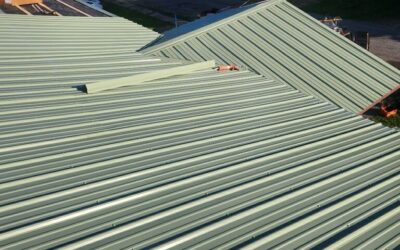The Ultimate Guide to Roofing Underlayment by S&K Construction And Remodeling LLC
Introduction
A strong and durable roof is more than just shingles. One of the most critical but often overlooked components of a roofing system is the underlayment. Acting as a secondary barrier between the roof deck and exterior elements, roofing underlayment plays a vital role in protecting your home from moisture, extreme temperatures, and wind damage. At S&K Construction And Remodeling LLC, we specialize in high-quality roofing solutions, ensuring that every home is equipped with the best materials for long-term durability. In this guide, we will explore everything you need to know about roofing underlayment, including its importance, types, benefits, and installation process.
What is Roofing Underlayment?
Roofing underlayment is a protective layer installed directly over the roof deck and beneath the shingles, tiles, or metal roofing. It provides an extra shield against water penetration, preventing leaks and other structural damage. Underlayment is particularly important in areas prone to severe weather, as it helps keep moisture out and enhances the overall performance of the roof.
Types of Roofing Underlayment
Choosing the right underlayment is essential for maximizing the lifespan and efficiency of your roof. Here are the three main types:
1. Asphalt-Saturated Felt Underlayment
- Traditionally used in roofing, asphalt-saturated felt is made from organic or fiberglass material soaked in asphalt.
- It offers moderate water resistance and provides a good balance of affordability and durability.
- Best suited for areas with minimal exposure to extreme weather conditions.
2. Synthetic Underlayment
- Made from polypropylene or polyethylene, synthetic underlayment is more durable, lightweight, and resistant to water compared to asphalt felt.
- It offers superior tear resistance, UV protection, and long-term performance.
- Ideal for all types of roofing systems, including asphalt shingles, metal, and tile roofs.
3. Rubberized Asphalt Underlayment
- This premium underlayment is composed of rubber polymers and asphalt, creating a waterproof, self-adhering membrane.
- It provides excellent flexibility and is highly resistant to water penetration, making it ideal for areas prone to heavy rainfall and ice dams.
- Often used in high-end roofing applications or locations with extreme weather conditions.
Benefits of High-Quality Roofing Underlayment
Investing in high-quality roofing underlayment offers several advantages:
1. Enhanced Water Resistance
- Underlayment acts as an additional layer of protection against rain, snow, and ice, reducing the risk of leaks and moisture-related damage.
2. Improved Roof Longevity
- A well-installed underlayment extends the lifespan of your roofing materials by preventing premature deterioration caused by water exposure and temperature fluctuations.
3. Increased Energy Efficiency
- Certain types of underlayment help regulate attic temperatures, reducing heat buildup in summer and retaining warmth in winter. This results in lower energy costs and a more comfortable home environment.
4. Protection Against Wind Damage
- In high-wind areas, underlayment serves as an extra layer of defense, preventing shingles from being lifted and reducing the risk of water infiltration.
5. Prevention of Ice Dams
- In colder climates, underlayment helps prevent ice dams by creating a barrier that stops water from seeping under shingles and into the roof deck.
Roofing Underlayment Installation Process
At S&K Construction And Remodeling LLC, we follow a meticulous installation process to ensure that your roof is properly protected from the elements.
Step 1: Roof Deck Inspection and Preparation
- We assess the condition of the roof deck, checking for any damage, rot, or irregularities.
- Necessary repairs are made to ensure a smooth and stable foundation for the underlayment.
Step 2: Underlayment Selection and Layout
- Based on your roof type and local climate, we recommend the best underlayment option.
- We roll out the underlayment from the eaves to the peak, ensuring proper overlap to create a seamless, watertight barrier.
Step 3: Securing the Underlayment
- Depending on the material, we secure the underlayment using nails, staples, or self-adhering backing.
- Additional fasteners are used in high-wind areas to prevent movement during installation.
Step 4: Flashing and Sealing
- Flashing is installed around roof penetrations such as vents, chimneys, and skylights to further prevent water infiltration.
- We use high-quality sealants to reinforce edges and seams for maximum durability.
Step 5: Final Inspection and Roof Covering Installation
- Our team conducts a thorough inspection to verify that the underlayment is installed correctly.
- Once approved, we proceed with the installation of shingles, metal, or tile roofing materials.
Why Choose S&K Construction And Remodeling LLC?
At S&K Construction And Remodeling LLC, we are committed to providing top-tier roofing solutions that protect and enhance your home. Here’s why homeowners trust us:
- Experienced Professionals: Our team has years of experience in roofing installation, ensuring precision and quality workmanship.
- Premium Materials: We use only the highest-quality underlayment products to ensure long-lasting protection.
- Affordable Pricing: Our services are competitively priced without compromising on quality.
- Customer Satisfaction: We prioritize client satisfaction and stand by our work with industry-leading warranties.
- Local Expertise: Serving Youngstown and surrounding areas, we understand the unique roofing challenges in our region.
Frequently Asked Questions About Roofing Underlayment
1. Is underlayment necessary for all roofs?
Yes, underlayment provides critical protection against moisture and weather damage, extending the lifespan of your roof.
2. How long does roofing underlayment last?
The lifespan varies by material, with synthetic and rubberized asphalt options lasting 25-50 years, while traditional felt may last 10-20 years.
3. Can I install new shingles without replacing the underlayment?
It’s generally recommended to replace the underlayment during a roof replacement to ensure maximum protection and performance.
4. What is the best underlayment for metal roofing?
Synthetic or rubberized asphalt underlayment is ideal for metal roofs, as it offers superior heat resistance and moisture protection.
5. How much does underlayment installation cost?
Costs vary based on material type and roof size, but investing in high-quality underlayment can save money in the long run by preventing costly repairs.
Conclusion
Roofing underlayment is a vital component of a durable and weather-resistant roofing system. Whether you’re installing a new roof or replacing an old one, choosing the right underlayment is essential for long-term protection and energy efficiency. At S&K Construction And Remodeling LLC, we provide expert underlayment installation services to ensure that your home remains secure and well-insulated for years to come.
Call to Action
Need professional roofing underlayment installation? Contact S&K Construction And Remodeling LLC today for a free consultation and let our experts enhance your home’s roofing system with top-quality materials and expert craftsmanship!
 (440) 307-2060
(440) 307-2060

